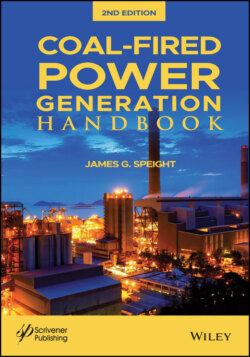Читать книгу Coal-Fired Power Generation Handbook - James Speight G., James G. Speight - Страница 81
3.8.1 Unit Train
ОглавлениеThe unit train is the most common form of long-distance coal transportation. A unit train is a group of railcars that operate in a dedicated shuttle service between a coal mine and a power plant.
A typical unit train consists of 100 to 120 railcars and 3 to 5 locomotives, with each railcar holding approximately 100 to 110 tons of coal. Carefully coordinated loading and unloading terminals are necessary to minimize costs. A unit train making a round trip from mine to plant has a typical turnaround time of 72 hours, including a 4-hour loading and 10-hour unloading and servicing time per train.
The system is designed so that the trains can be loaded and unloaded without stopping the train, thereby providing a continuous means of shipping the coal as well as an increase in the rate at which the coal can be moved from the mine site to the consumer (Lindberg and Provorse, 1977). As a typical example, it is difficult to drive on many roads in eastern Wyoming, on any given day, without passing several such trains carrying coal to market. In fact, rail service is the lifeline of the large majority (95%) of the western coal mines.
Modern unloaders use rotary dump devices, which eliminate problems with coal freezing in bottom dump cars. The unloader includes a train positioner arm that pulls the entire train to position each car sequentially over a coal hopper. The dumper clamps an individual car against a platform that swivels the car upside down to dump the coal. Swiveling couplers enable the entire operation to occur while the cars are still coupled together. Unloading a unit train typically takes approximately three hours.
Shorter trains may use railcars with an air-dump, which relies on air pressure from the engine plus a hot shoe on each car. When the hot shoe comes into contact with a hot rail at the unloading trestle, it shoots an electric charge through the air dump apparatus and causes the doors on the bottom of the car to open, dumping the coal through the opening in the trestle. Unloading one of these trains takes anywhere from an hour to an hour and a half. Older unloaders may still use manually operated bottom-dump rail cars and a “shaker” attached to the cars to dump the coal.
The cost of shipping coal by train is often more than the mining costs. Using a barge or ship to move coal is a lot less expensive. In the United States there are 25,000 miles of waterways, but not enough to reach all destinations in the country. To reduce transportation costs, power plants are sometimes constructed near coal mines.
